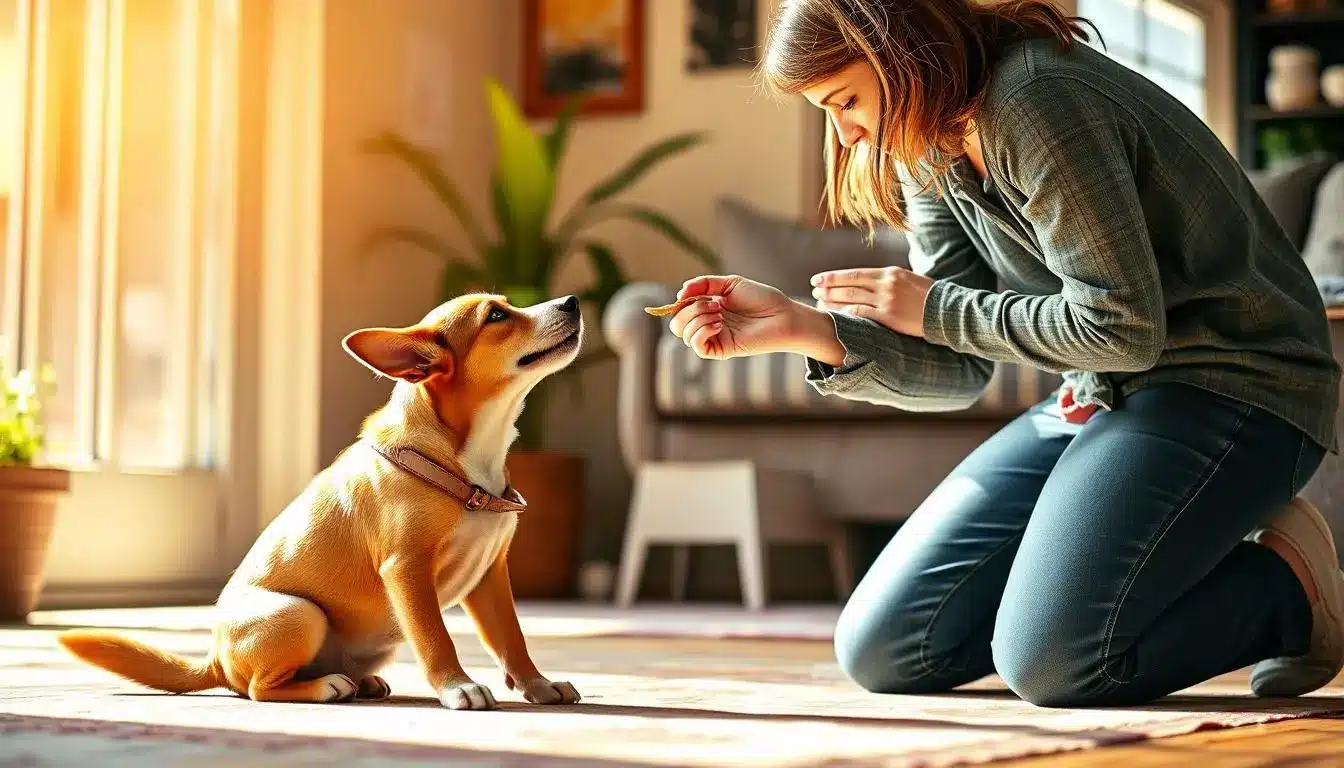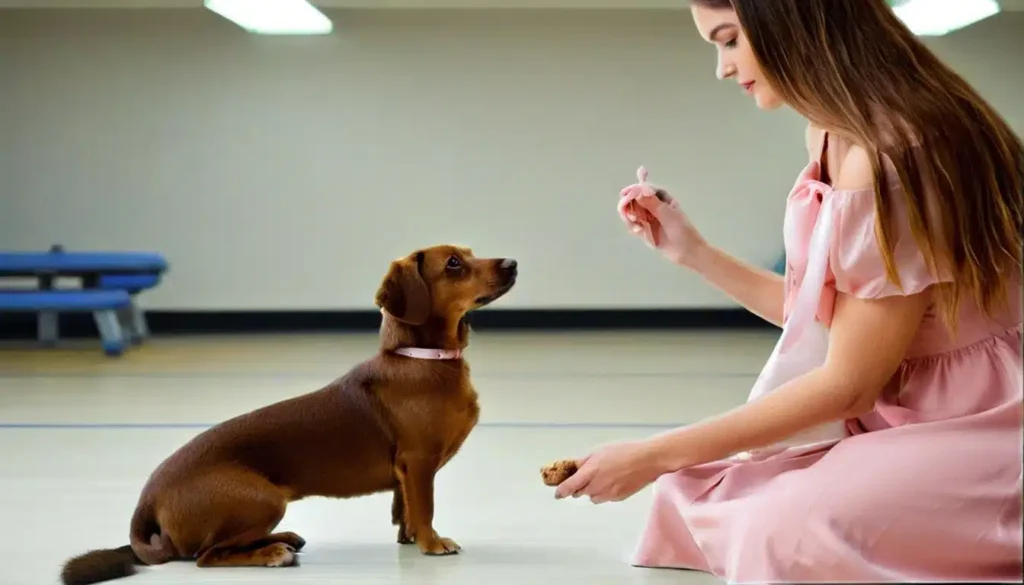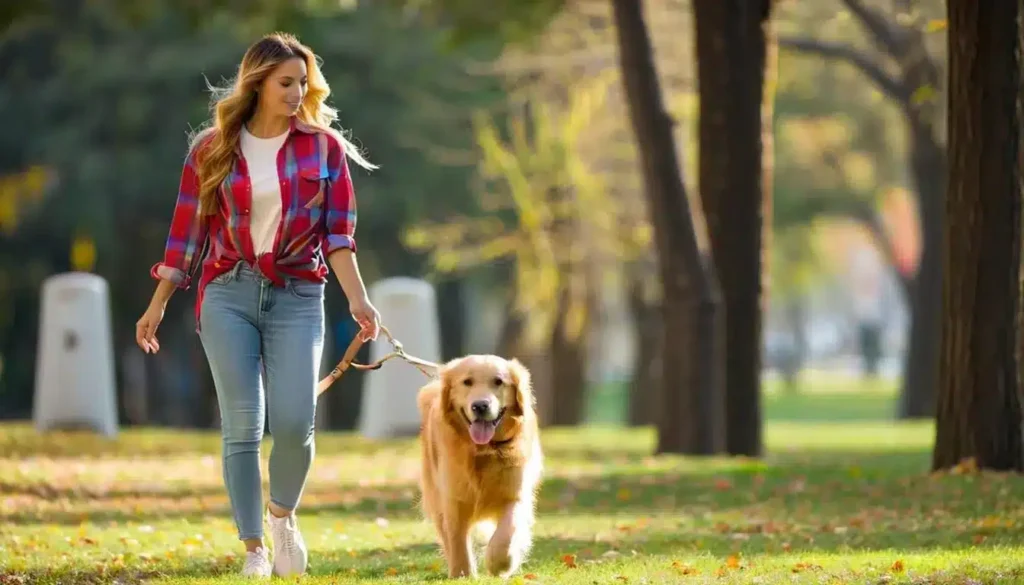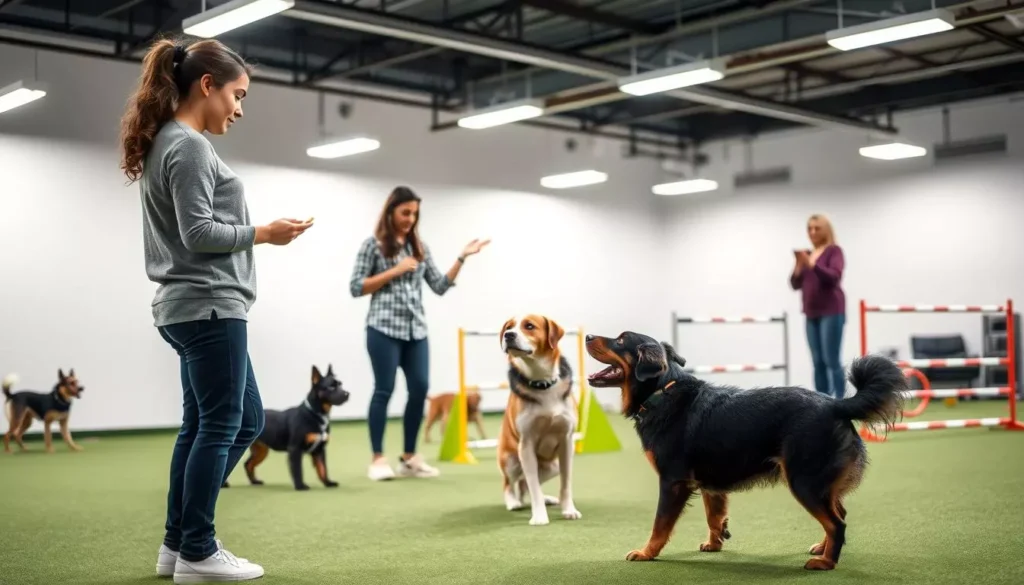Starting as a new dog parent can be both exciting and daunting. Every wag and curious look from my dog invites me to connect more deeply. Teaching my dog new skills is more than just commands. It's about strengthening our bond and making our lives richer.
By using beginner dog training methods, I learn more about my dog. Dog skills help with good behavior. In this guide, I share my experiences to help you and your dog enjoy learning together.
Key Takeaways
- Effective techniques foster a strong bond with your dog.
- Beginner dog training lays the foundation for a well-behaved pet.
- Understanding your dog's behavior is key to successful training.
- Positive reinforcement enhances the learning experience.
- Teaching basic commands creates a safe environment for you and your dog.
Getting Started with Dog Training
Starting dog training is exciting and rewarding. It's important to set clear expectations for my dog from the beginning. Consistency helps my dog feel secure and builds their confidence.
I use positive reinforcement to train my dog. This means rewarding good behavior with treats or praise. It motivates my dog to behave well.
Learning the basics of dog training is key. I keep training sessions short, between 5 to 10 minutes. This keeps my pup interested and happy.
It's also important to make training fun and not too hard. Puppies can start training at 8 weeks. This helps us bond and makes my dog more well-behaved.
Understanding Your Dog's Behavior
Getting to know your dog's behavior is key to successful training. Dogs communicate through body language and sounds. It's important to understand what they're trying to say.
This knowledge helps avoid confusion and makes training easier. It's all about reading their cues correctly.
Dogs' behavior is shaped by their age, breed, and personality. Watching your dog closely can give you a better understanding of them. Being patient is crucial.
It helps you know when your dog is ready to learn. Or when they're feeling stressed and can't focus.
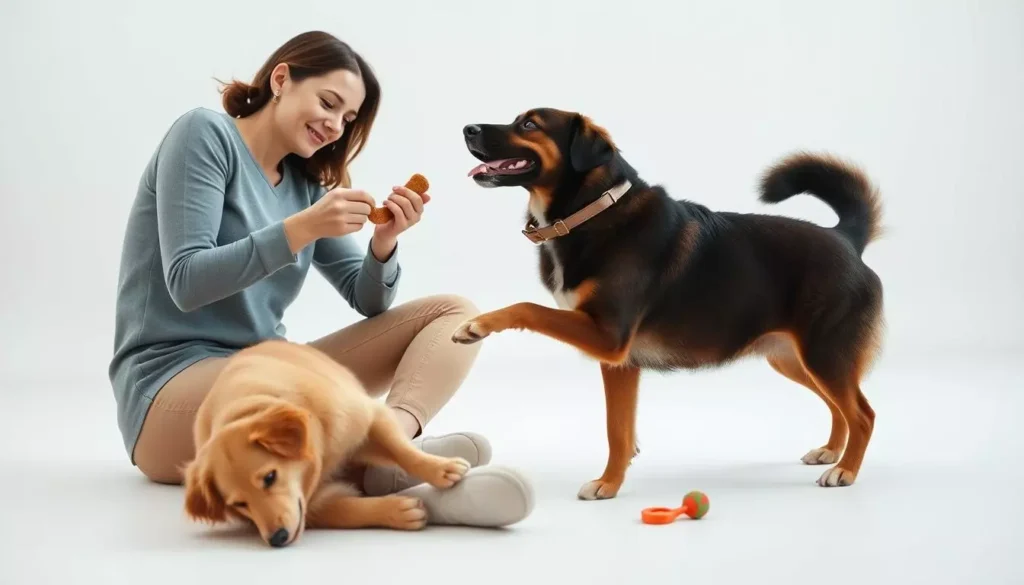
Learning about canine psychology helps strengthen your bond with your dog. This connection improves training and builds a lifelong relationship based on trust and understanding.
The Importance of Positive Reinforcement
In dog training, positive reinforcement is key. It rewards good actions, creating a healthy learning space. Instead of punishment, I use treats, praise, or toys for good behavior. This builds a strong base for effective training.
Positive reinforcement builds trust and strengthens our bond. Each new skill learned makes my dog more eager to learn. This makes training fun for both of us. It also makes my pet more well-mannered and builds a lasting, respectful relationship.
Basic Commands Every Dog Should Know
Teaching your dog basic commands is key for a strong training base. These commands improve communication and open doors to more skills. Three essential commands are teaching a dog to sit, lie down, and stay.
How to Teach a Dog to Sit
To teach a dog to sit, hold a treat near their nose. Move your hand up, guiding their head. This makes their rear lower to the ground.
Give them the treat and praise them as soon as they sit. Do this many times until they learn the command.
How to Teach a Dog to Lie Down
Start with your dog sitting. Hold a treat in front of their nose and slowly move it down. This will make them follow the treat with their head.
As they follow, gently push their front legs down. When they lie down, give them the treat and praise. Practice this often to reinforce the action.
How to Teach a Dog to Stay
First, make sure your dog is sitting. Say "stay" and show them your palm. Then, take a step back and wait a few seconds.
If they stay, come back and give them a treat and praise. Increase the time and distance you step back as they learn.
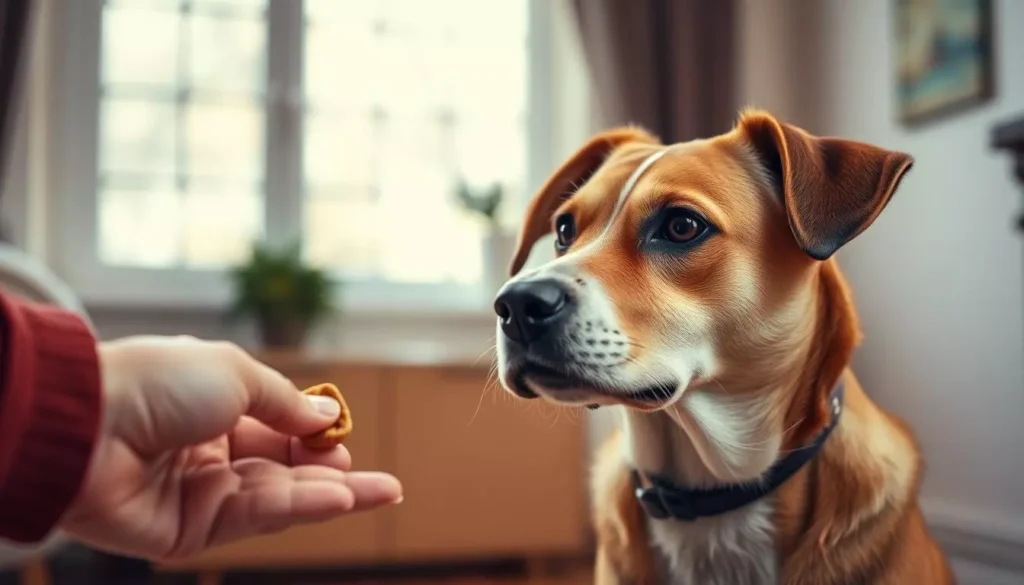
How to Teach Your Dog to Come When Called
Teaching your dog to come when called is crucial for their safety and your peace of mind. This command is the base of recall training, giving you control in many situations. Simple dog training techniques can make this command fun and rewarding for both you and your dog.
Step-by-Step Instructions for Recall Training
- Start Indoors: Begin the recall training in a quiet place with few distractions. This lets your dog focus on your commands.
- Use Their Name: Call your dog by their name and then say "come." Use a happy tone to make them want to come.
- Reward Immediately: Give a treat or praise as soon as they come to you. This makes them want to do it again.
- Increase Distance Gradually: After they learn the command, start moving further away. This teaches them to come from a distance.
- Make it a Game: Add fun to the training. Run away and invite them to chase you. This makes training a game.
These steps help you teach your dog to come effectively. Remember, being consistent and patient is important for successful recall training. Celebrate every small victory to make training rewarding and fun.
Loose-Leash Walking: A Must for Your Dog
Walking your dog on a loose leash makes outings fun and stress-free. By using the right dog leash training techniques, we can both enjoy our walks more. It lets my dog explore freely, while I keep us moving together smoothly.
Techniques for Encouraging Good Leash Manners
To teach loose-leash walking, I reward my dog for staying by my side without pulling. If they pull, I change direction. This gets their attention back.
I also use positive reinforcement. I give my dog treats for walking nicely on a loose leash. This keeps them motivated to behave well.
- Use verbal cues like "let's go" to get their focus back on walking at my side.
- Gradually increase walking distance while rewarding even the smallest progress toward good leash manners.
- Add distractions slowly, ensuring my dog continues to walk calmly beside me without pulling.
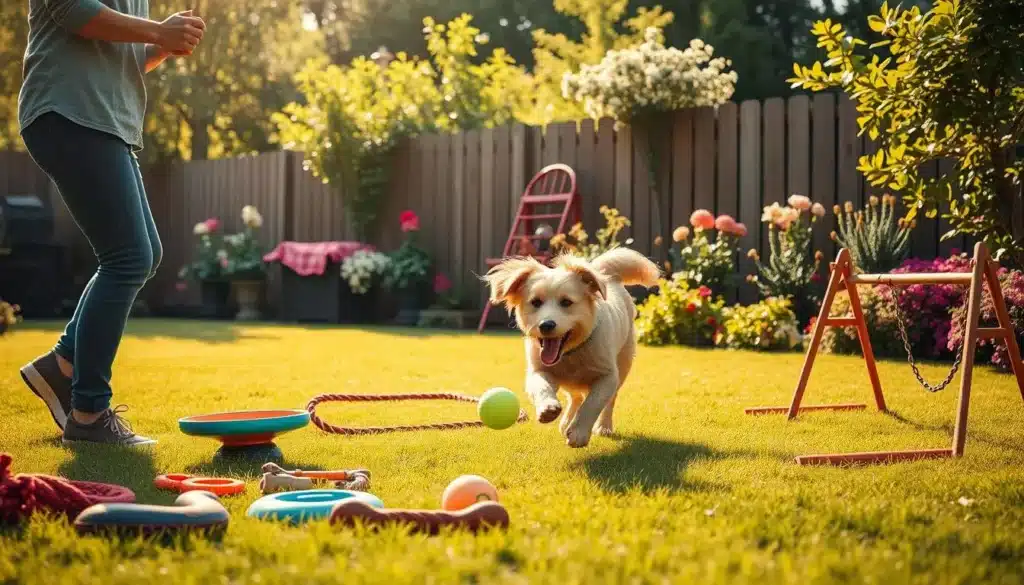
Teach Dog to Play Dead: A Fun Trick
Teaching your dog to play dead is a fun dog trick. It impresses friends and keeps your dog's mind active. First, make sure your dog knows the down command well. This is the base for the trick.
Next, use a treat to help your dog roll onto their side. This makes it look like they're playing dead. Be patient as they learn this new trick. Praise and treats will help them get it right.
Adding this trick to your training routine strengthens your bond with your dog. It's a fun way to keep them active and mentally sharp. It also makes our training sessions more fun and memorable.
Fun Tricks to Stimulate Your Dog Mentally
Playing fun tricks with our dogs is a great way to keep their minds sharp. Teaching them to spin and roll over are two fun tricks. These activities boost their brain power and strengthen our bond.
How to Teach Your Dog to Spin
To teach your dog to spin, use a treat to guide them. Hold the treat near their nose and move it in a circle. When they spin, give them a treat and praise them.
Be consistent. Practice a few times each session. Slowly increase the speed as they get better.
How to Teach a Dog to Roll Over
To teach a dog to roll over, start with them in a down position. Hold a treat by their nose and guide them to roll onto their side. Then, help them roll all the way over.
Reward them with treats and praise when they roll over. Practice often, and they'll learn it quickly!
| Trick | Steps | Rewards |
|---|---|---|
| Teach Dog to Spin | Use a treat to guide them in a circle | Reward with treats and praise for successful spins |
| Teach a Dog to Roll Over | Start in the down position, guide with a treat | Reward when they complete the roll |
How to Teach a Dog to Crawl for Fun and Bonding
Teaching my dog to crawl is a fun way to bond. It's a simple trick that makes our time together more special. It starts with my dog in a down position.
I hold a treat close to the ground to get my dog to move. I say "crawl" to help them connect the word with the action. This way, they learn to move forward while staying low.
When my dog gets the hang of it, we can play crawl games together. It keeps their mind active and strengthens our bond. Playing together is a great way to spend quality time.
Preventing Common Behavior Issues Through Training
Effective dog training is key to avoiding common problems. Issues like barking too much and jumping up on guests are common. Fixing these early can make life better for you and your dog.
Dog Barks When Training: What to Do
Dogs barking during training can be a problem. Make sure training is fun and they get enough exercise first. Using calm words to correct them helps a lot.
Being consistent is crucial. A tired dog is less likely to bark, as they've used up their energy.
How to Stop Jumping Up on Guests
Teaching your dog the "off" command can really help. Reward them with treats and praise when they stay down. Keeping things consistent is important.
When guests come, remind them not to let your dog jump up. This helps with training and reinforces good behavior.
| Behavior Issue | Correction Method | Tip |
|---|---|---|
| Barking During Training | Use calm reassurance and engaging sessions | Exercise before training |
| Jumping Up on Guests | Teach the command "off" and reward | Keep consistency with your guests |
Advanced Skills: Training Your Dog for Specialized Tasks
Advanced dog training can lead to roles like police and service dogs. These roles need obedience and specific skills for real-world tasks. Learning about specialized dog training can help your dog succeed.
How to Get Your Dog into Police Training
To get your dog into police training, they must have basic obedience and the right temperament. They need to be physically fit and respond well to commands. Skills like scent work and agility are also crucial for field performance. Specialized training includes:
- Scent detection techniques
- Agility courses for physical conditioning
- Socialization with various environments and situations
Service Dog Training Duration and Expectations
Service dog training takes a lot of time and effort. It can last up to two years, depending on the tasks. Each dog learns at their own pace, affecting training expectations. Key aspects of training include:
| Training Component | Estimated Duration | Description |
|---|---|---|
| Basic Obedience | 3-6 months | Fundamental commands like sit, stay, and come |
| Task Training | 6-12 months | Specific tasks to assist with disabilities such as mobility or alerting |
| Public Access Training | 3-6 months | Training to behave appropriately in public settings |
Building a Strong Bond Through Training
Training your dog is key to a strong bond. It's more than just teaching commands. It's a way to grow closer to your dog. By focusing on dog training bonding, you make learning fun and build trust.
Engaging in fun dog training activities brings joy to both you and your dog. It's not just about learning. It's about enjoying each other's company.
Making the Training Process More Fun for Your Dog
Adding fun to training sessions makes a big difference. I use games and challenges to make it enjoyable. This turns training into playtime.
Activities like simple commands or fun tricks keep my dog's mind active. They also strengthen our bond. Here are some ways to make training fun for my dog:
- Use toys as rewards for good behavior.
- Try agility courses that we can do together.
- Teach tricks like fetch or hide-and-seek.
- Change the training location to keep things interesting.
- Balance learning with playtime in our routine.
When training is fun, my dog wants to do it. This makes our time together more rewarding. By mixing fun with learning, we grow closer.
Conclusion
Looking back, I've learned that training a dog needs patience and consistency. Using positive methods helps me teach my dog new things. It also makes our bond stronger and more loving.
Starting with basic commands, we then moved on to fun tricks and special tasks. Learning new skills has made our lives richer. With each command, I see my dog grow and my confidence as a trainer boost.
Training my dog has given us more than just obedience. It's about growing together through positive reinforcement and patience. This journey has made our relationship stronger and more rewarding for both of us.

